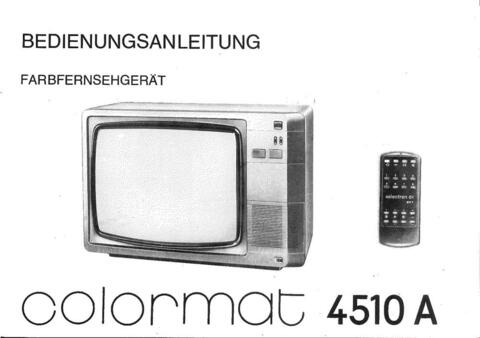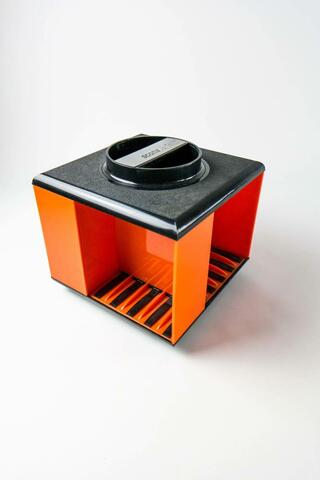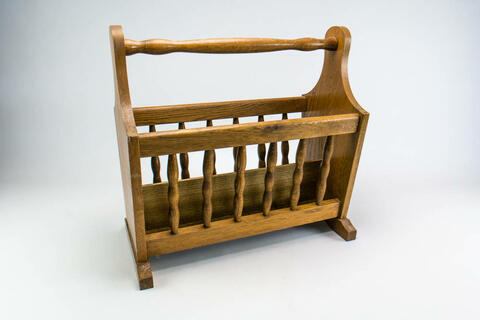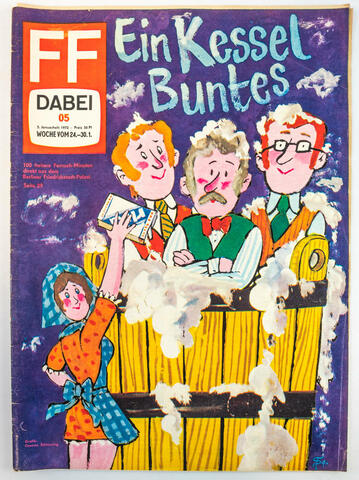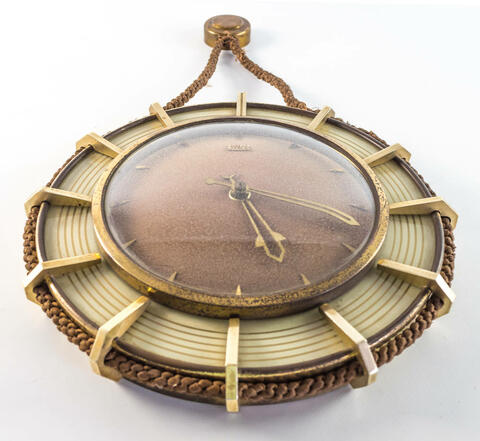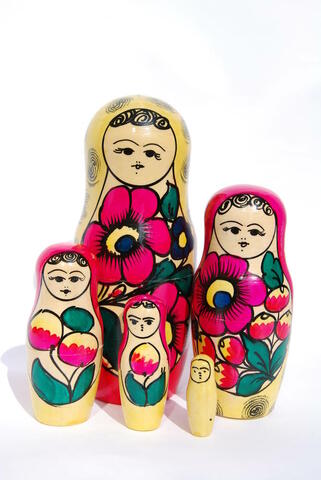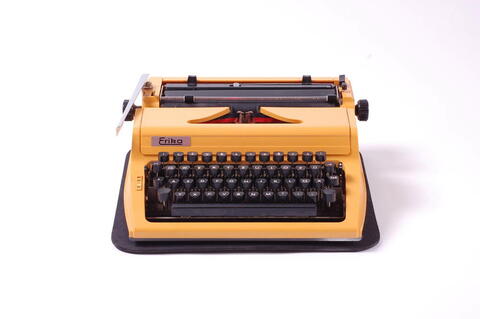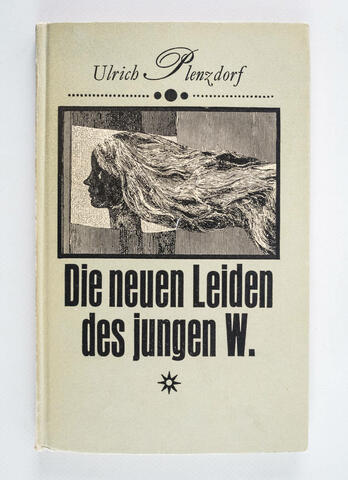From the museum
The living room in the DDR Museum
The living room is the largest room in our staged prefabricated flat. Located at the end of the hallway and connected to the kitchen by a hatch, guests can expect to come across a wide variety of themes in this room. Even in the GDR, the living room was the centre of family life. It was here that people ate together, played games, watched television, told stories and set up the festive table for youth dedication or birthdays.
From Dessau to Berlin Mitte
Our reconstructed living room is modelled on a typical living room from the mid-1980s and is furnished with many original objects from the GDR. In addition to a »Carat« wall unit, a multifunctional table and various bottles of alcoholic beverages, we have also included original items, such as window frames, a balcony door, a radiator and light switches (including cable coverings). Because these basic furnishings were not initially part of the DDR Museum’s collection, they had to be found elsewhere. To this end, we contacted various housing cooperatives and city councils in several federal states to obtain as many original furnishing elements as possible from prefabricated flats that had not yet undergone renovation. We were also able to locate a prefabricated building in Dessau, for which renovations were planned in 2015/16 and from which all the furnishing elements needed for our GDR flat were taken. In addition, a bathtub, as well as skirting boards and a fuse box with panelling, could be added to our collection and integrated into the exhibition.
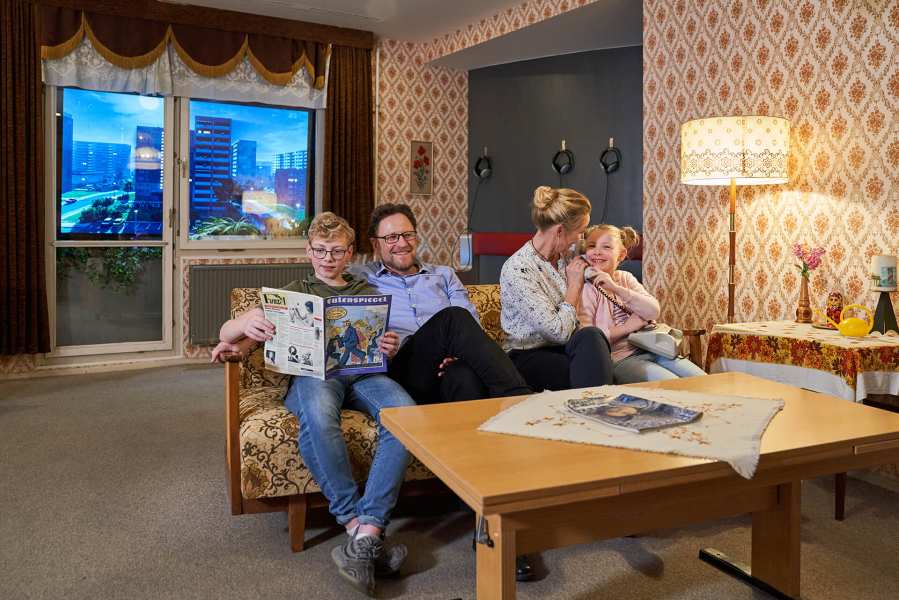
A wall unit with surprising contents
The largest object in the living room is a true GDR furnishing classic: the »Carat« wall unit. It could be put together as desired, as its elements such as the bar or display cabinets could be purchased individually. As an element of our exhibition, the wall unit provides information on, among other things, how difficult it was to find housing in the GDR and what opportunities the population had to get around the housing office. Various purchase receipts, e.g. for a Trabant or the Colormat television, provide clues to the state’s method of fixing prices. Basic goods such as bread rolls, rent for flats, electricity or water were very cheap and subsidised by the state. However, many products, mostly scarce goods, fell into the category of luxury goods and could only be purchased at considerable prices.
The wall unit is equipped with decorative items, such as vases, jugs and pottery, as well as a stereo and cassette carousel, both of which were expensive at the time. Behind two cupboard doors, original copies of games are on display, lovingly made by hand. They illustrate the effort people made to bring the board and card games of the West into their own living rooms. One of the most common board games families tried to recreate was the capitalist game Monopoly.
Another part of the wall unit addresses the topics of alcohol consumption, festivals and celebrations. But even though there were many holidays, commemorative days and days of action, as well as Christian festivals and GDR-typical family celebrations such as youth dedication, alcohol was much more commonplace. Alarmingly, as statistics show, the per capita consumption figures soared over the GDR’s 40 years of existence and were far higher than in the Federal Republic. The same applied for cigarette consumption. Hard drugs, on the other hand, were much more widespread in the Federal Republic, as people could not get most of them past the GDR's border controls.
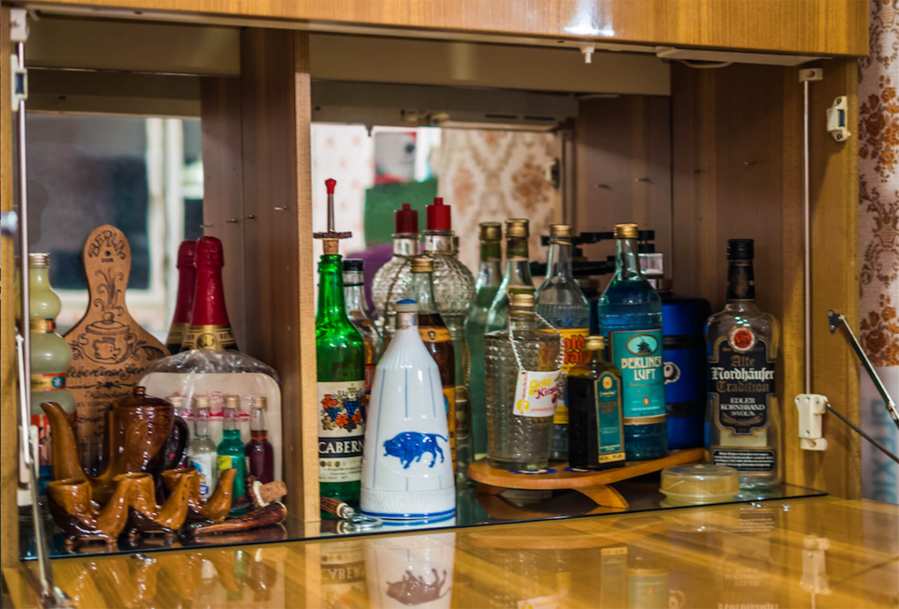
Interactive elements
As in the rest of the permanent exhibition, there are various interactive elements in our recreated living room that may evoke a memory or two. Some of them, such as the »Erika« typewriter (designed by product designer Karl-Clauss-Dietel) can even be tried out - visitors are welcome to type to their heart’s content. It is not unusual for us to receive funny, affectionate and interesting little messages.
The television installation, with a touch screen embedded into the coffee table, includes excerpts from the GDR’s television programme from 5 March 1984, a very ordinary Monday. You can select a clip on the screen, which is then played back on an original television set. GDR shows such as Sandmännchen, Schwarzer Kanal and Schulfernsehen are augmented by ARD and ZDF programmes from the West, which were received by many GDR households at the time, albeit frowned upon by the state. Thus, it was possible to watch the Heute news, the Tagesschau or the »West-Sandmännchen«. Only in some small areas, especially around Dresden far to the east, were citizens unable to find out what was going on in the world and even in their own country without censorship.
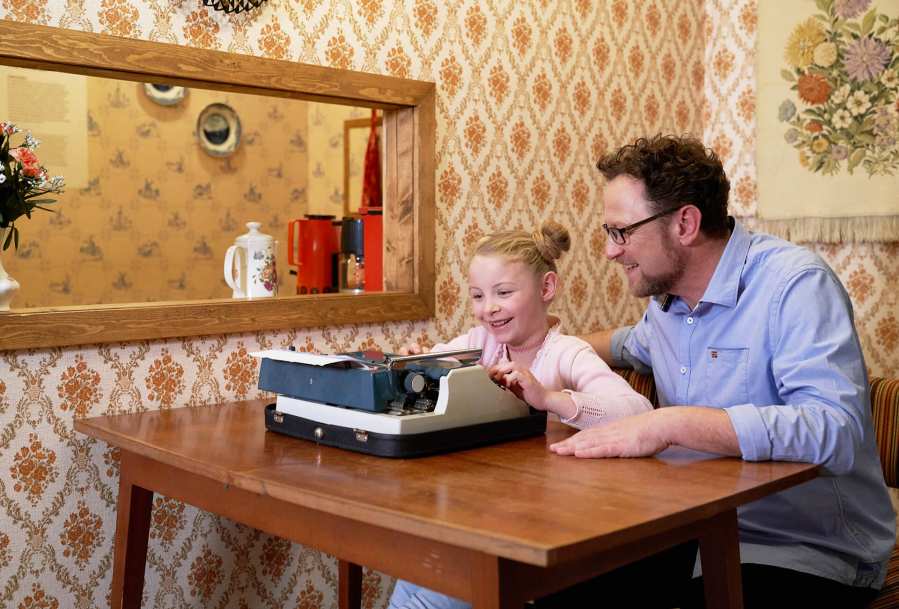
The DDR Museum Charts offer an insight into well-known literature and hit songs from the GDR. Visitors can listen to almost 100 well-known music titles on a display and mark them with a »Like«. The system notes which titles have been listened to and liked and calculates a live popularity list from this information. In addition to music, audio samples or well-known books from the GDR, such as Ulrich Pflenzdorf’s »The new Sorrows of Young W.« or »Franziska Linkerhand« by Brigitte Reimann, are also available.
A special highlight of the living room are the digital windows, which can also be found in the children’s room, bedroom and kindergarten room. The DDR Museum itself is located underground. The reconstructed prefabricated flat, on the other hand, is located on the fictitious 5th floor. On 84-inch screens behind (original) GDR windows, visitors can look out onto a digitally reconstructed prefabricated landscape, which can also be seen in our Trabant driving simulation at the beginning of the permanent exhibition. Not only is the typical, romanticised view of the prefabricated building shown, but also various weather scenarios, times of day and lighting moods.
Editors' note: The article was published first on 4 October 2016.
